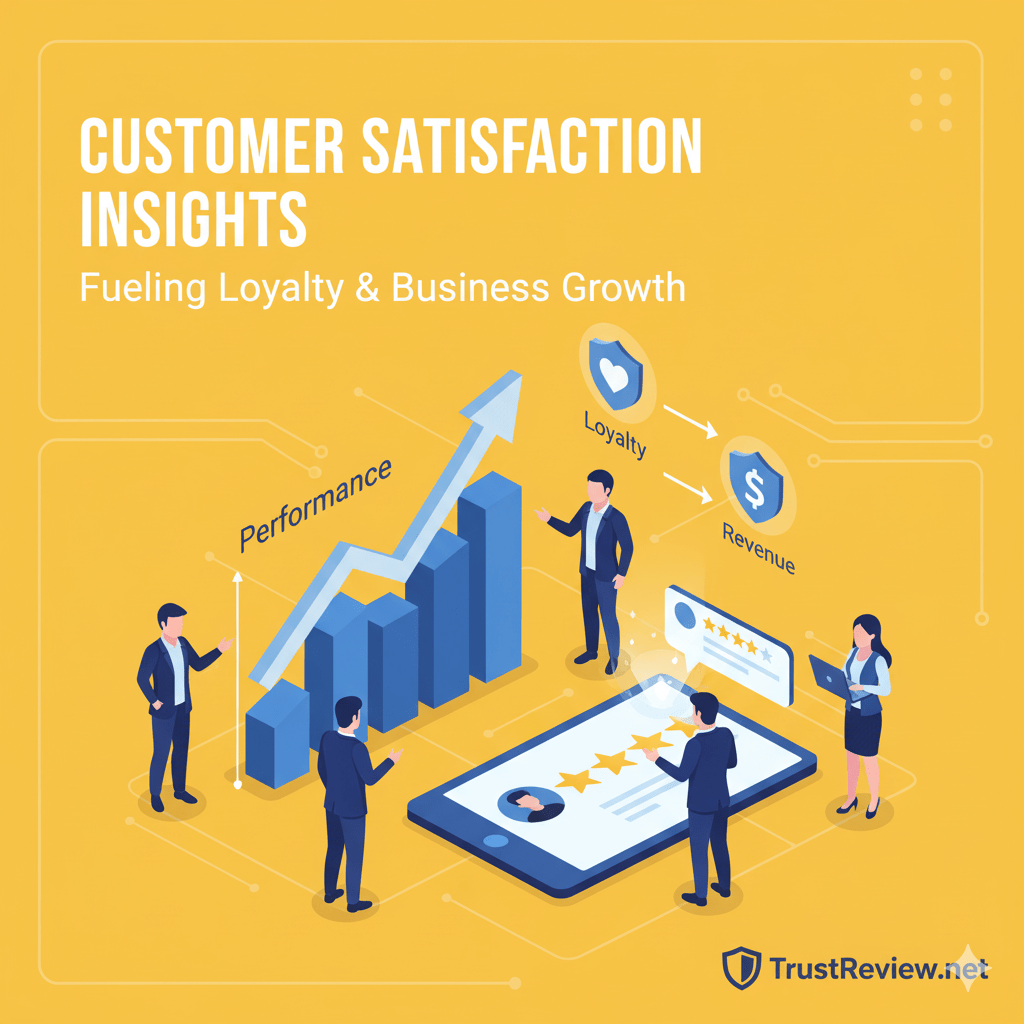Customer satisfaction is a key indicator of a business’s performance. It directly impacts customer loyalty, brand reputation, and revenue. Understanding customer satisfaction allows businesses to identify areas for improvement, develop strategies for better service, and foster stronger relationships with their customers. Here’s an in-depth look at customer satisfaction insights and how businesses can leverage them to improve their offerings.
1. Why Customer Satisfaction Matters
Customer satisfaction is crucial for several reasons:
Loyalty and Retention: Satisfied customers are more likely to return and make repeat purchases. High satisfaction fosters brand loyalty, which is essential for long-term success.
Word-of-Mouth Marketing: Happy customers are your best marketing tool. They are more likely to recommend your business to others, leading to organic growth through referrals.
Competitive Advantage: A strong track record of customer satisfaction can differentiate your brand from competitors, allowing you to stand out in a crowded market.
2. How to Measure Customer Satisfaction
There are various ways to measure customer satisfaction, each providing unique insights into different aspects of the customer experience.
Surveys and Questionnaires: Regularly surveying your customers allows you to gather direct feedback on their experience with your product or service. Use simple questions like “How satisfied are you with our product/service?” and follow-up questions to gauge specific areas of concern.
Net Promoter Score (NPS): NPS measures customer loyalty by asking customers how likely they are to recommend your product or service to others. A high NPS indicates strong customer satisfaction, while a low score suggests areas for improvement.
Customer Effort Score (CES): This score gauges how easy it is for customers to do business with you. A lower effort score (indicating that it was easy to interact with your business) correlates with higher satisfaction.
Social Media and Online Reviews: Monitoring online reviews and social media mentions can offer real-time insights into customer satisfaction. Customers are often vocal about their experiences on platforms like Facebook, Google, and Trustreview.net.
Example Insight:
“After conducting a survey, we found that 75% of our customers were highly satisfied with the quality of our products, but 40% expressed frustration with our delivery times. This insight guided us to streamline our logistics process.”
3. Identifying Key Drivers of Customer Satisfaction
To improve customer satisfaction, businesses must understand what drives it. Common factors include:
Product or Service Quality: The most significant factor influencing customer satisfaction is the quality of the product or service. If the product fails to meet expectations, customers will be dissatisfied, regardless of other factors.
Customer Support: Efficient, friendly, and helpful customer service can turn a negative experience into a positive one. Prompt responses, clear communication, and problem-solving ability play a major role in customer satisfaction.
Price: Customers want to feel that they’re getting value for their money. Offering competitive pricing, discounts, or loyalty programs can enhance satisfaction.
Ease of Use: Whether it’s an online shopping experience, using a product, or navigating customer support channels, ease of use is crucial. A seamless, frictionless experience increases satisfaction.
Brand Values and Trust: Customers value brands that align with their values. Transparent communication, ethical practices, and consistent brand messaging foster trust and satisfaction.
4. The Role of Personalization in Customer Satisfaction
Personalization is one of the most effective ways to improve customer satisfaction. When customers feel that a brand understands their preferences and needs, they are more likely to feel valued.
Personalized Communication: Use customer data to send tailored messages, special offers, or product recommendations based on previous interactions. Personalized emails, birthday discounts, or exclusive deals for loyal customers can strengthen the relationship.
Customized Products or Services: Offering customization options for products or services allows customers to feel like they are receiving something unique, which significantly boosts satisfaction.
Example Insight:
“After personalizing our email campaigns based on customer preferences, we saw a 20% increase in click-through rates and a significant improvement in customer retention.”
5. Turning Negative Feedback into Action
Negative feedback is inevitable, but it can provide valuable insights into areas for improvement. It’s essential to approach negative feedback constructively:
Listen Actively: Acknowledge customer complaints and listen to their concerns without getting defensive. This shows that you care about their experience.
Respond Promptly: Address issues as quickly as possible. Providing timely solutions or offering compensation can mitigate dissatisfaction and preserve the customer relationship.
Make Improvements: Use negative feedback as an opportunity to refine your products, services, or processes. By showing customers that you take their feedback seriously, you increase trust and satisfaction.
6. Leveraging Customer Satisfaction Data for Continuous Improvement
Customer satisfaction data should not just be collected; it should drive business decisions. Use the insights gathered from surveys, reviews, and NPS scores to:
Refine Marketing Strategies: If customers are happy with specific product features, emphasize them in your marketing campaigns.
Enhance Customer Service: If there are consistent complaints about slow response times, invest in training your customer support team or improving your systems to address the issue.
Product Development: Use customer feedback to identify gaps in your product offerings or features that need improvement.
7. The Impact of Customer Satisfaction on Business Growth
High levels of customer satisfaction are directly tied to business growth. Satisfied customers are more likely to:
Make Repeat Purchases: Loyal customers who are consistently satisfied with your service or product will return, driving sales.
Engage in Word-of-Mouth Marketing: Happy customers are more likely to recommend your business to their friends and family, providing organic marketing through referrals.
Provide Valuable Feedback: Satisfied customers are more likely to provide constructive feedback that can help you improve, while dissatisfied customers may leave without offering any suggestions for improvement.
Conclusion
Customer satisfaction is a critical measure of a business’s success. By understanding the key drivers, actively seeking feedback, and using insights to improve products, services, and customer experiences, businesses can create a positive cycle of growth and loyalty. Continuously monitoring customer satisfaction, addressing issues promptly, and personalizing experiences will ensure that customers remain satisfied, loyal, and advocates for your brand




Comments (0)